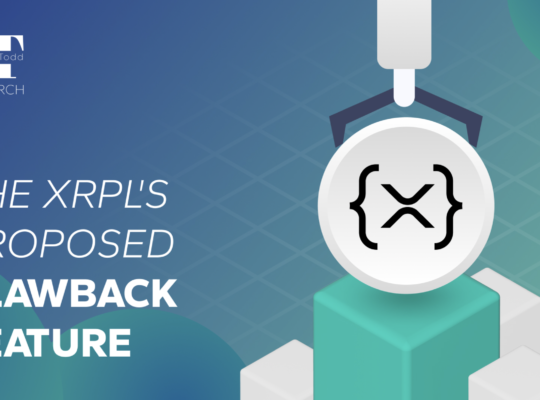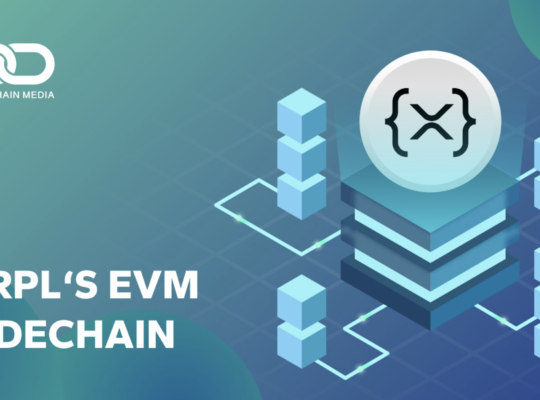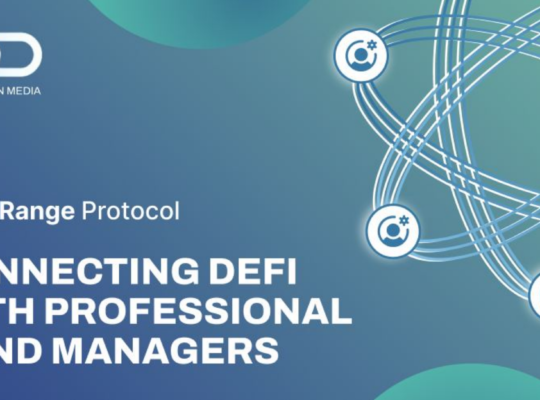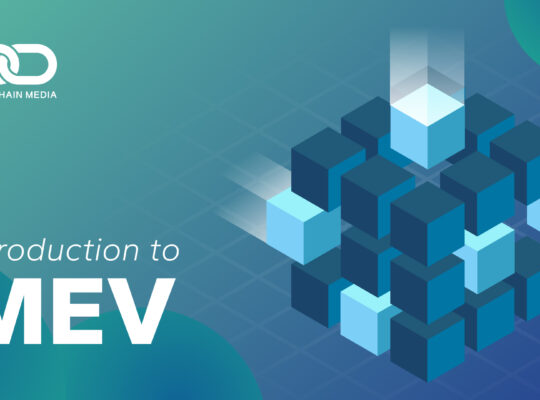
Introduction
This article marks my third on the topic of Reserve Protocol, whose team I first met at DevCon Bogota. I was subsequently invited to participate in their Hackathon, where participants write in response to various challenging question prompts.
This current article is focused on how to establish Reserve as an intelligent and trustworthy protocol that distinguishes itself from past stablecoin failures. In order to effectively convey the benefits of Reserve and their RTokens, it would be a disservice to not mention the tremendous benefits that stablecoins and other new forms of currencies are bringing to the world. That’s in part because several areas of the cryptocurrency industry have highlighted significant issues in recent history, such as:
- Capital destruction caused by the fall of FTX and Three Arrows Capital, as well as Luna Terra’s stablecoin.
- Carbon emissions due to Proof-of-Work blockchain systems such as Bitcoin.
- A myriad of scams and worthless projects masquerading as legitimate projects.
These are all significant issues, but they detract from the real glimmer of hope that many other areas of blockchain are bringing forth.
I will also recommend specific actions to present Reserve as trustworthy and intelligent. In particular, significant investments must be made into education surrounding the potential of both stablecoins and new forms of currencies. Additionally, partnerships with NGO’s and other entities will be necessary. Other suggestions are also presented, such as placing an emphasis on transparency, and integrations with relevant parties.
Before I begin, as a brief reminder, Reserve Protocol introduces the idea of a new form of currency: stablecoins backed by a diverse basket of assets. The underlying assets have default protection and generate yield, making them inflation-resistant. For a deeper look at what this entails, check out my first post on Reserve.
Stablecoins
A significant challenge at the present moment is that the majority of the public is unaware of what stablecoins are, let alone that various types exist. As such, stablecoins of all types have been subject to widespread criticism in recent history, especially post-collapse of Luna Terra’s algorithmic stablecoin $UST in May 2022. The market cap was north of $18 billion at the time, in effect wiping out a massive amount of user funds.
The reality is that $UST was an algorithmic stablecoin without any underlying collateral. While this is good from a capital efficiency standpoint, these types of stablecoins are extremely new and have not been thoroughly tested.
There are in fact three types of stablecoins that differ significantly:
- USD-backed: a real USD exists backing each stablecoin. These stablecoins tend to be legally compliant with strong peg stability, although centralized. Examples include Tether’s $USDT and Circle’s $USDC.
- Cryptocollateralized: cryptoassets are used as collateral. This provides both liquidity of funds while still benefitting from any upside price potential on the collateral. However, a sharp fall in the collateralized asset may trigger a liquidation. Examples include MakerDAO’s $DAI and Liquity’s $LUSD.
- Algorithmic: these rely on market incentives and algorithmic mechanisms in order to maintain peg stability. For example, a subcategory known as rebase stablecoins adjust their token supply in order to adjust pricing back to $1.00. $FRAX is the most popular algorithmic stablecoin, though it is partially cryptocollateralized as well.

Even USD-backed stablecoins, considered the most secure, have their own issues.
For one, concerns have been raised over the quality of the underlying collateral, as some issuers such as Tether have been vague in terms of how reserves are held. Additionally, USD-backed stablecoins may be prone to certain challenges such as government censorship (as they are issued by centralized firms) as well as a lack of regulatory clarity at the moment.
That being said, significant opportunities are presented through stablecoins:
- Fast, low-cost transfers of funds globally. Global payments, remittances, and so on are made significantly faster and cheaper.
- Access to alternative currencies. Countries with currency challenges can now purchase U.S. Dollars or other currencies digitally, with minimal fees.
- Greater efficiencies. Compared to the world of traditional finance, relying on Proof-of-Stake blockchain systems and stablecoins means lower carbon output, lower administrative overhead, and greater privacy.
- Decentralized finance: holders of stablecoins can interact with the DeFi ecosystem. This lets them borrow, lend, invest, and so on, in a permissionless manner.
- Programmable money: stablecoins in combination with smart contract code enables use-cases only limited to one’s imaginations.
This provides immense hope for citizens, especially in developing nations. Users will be able to not only transfer funds with minimal fees or time delays, but have more options to preserve their wealth through generations.
That being said, the status quo has its own problems. For one, USD-backed stablecoins are only as good as the underlying collateral, which is the USD. It is still subject to inflation, and many speculate that it may fall in value in the future (for example, new reserve currencies are being proposed).
Reserve Protocol builds upon this by introducing RTokens that have the same benefits of stablecoins, while being inflation-resistant, easy to spend in local economies, and customizable based on global input. I’ll summarize this next.
How to communicate an intelligent but complex idea?
It’s first important to first have a brief understanding of Reserve Protocol:
- Global currencies are all facing significant inflation, eroding value as time passes.
- The U.S. Dollar is strongest, but for several reasons it’s unclear if it will remain dominant forever. For example, a swelling debt bubble, and the BRICS introduction of a new reserve currency.
- Instead of backing a stablecoin with a U.S. Dollar, stablecoins could instead be backed by baskets of assets that generate underlying yield. For example, a mix of gold, government bonds, and U.S. Dollars could be on mix.
- As more assets can be used as collateral, innovation grows and this could take us in very new directions.
The underlying yield means that these new forms of currencies grow in value, making them inflation-resistant.
The above may make sense when I lay it out, but most people aren’t reading this article.
In order for Reserve Protocol to grow, they need more institutions and entrepreneurs proposing new forms of stablecoins, and for people to understand their value. Therefore, significant efforts must be undertaken to communicate this cutting-edge idea and why it’s valuable.
Recommendations
Education
SEO-analytics show that global searches for the term “stablecoins” are in search of information, quite distributed amongst countries, and have been trending downwards during the recent bear market.
Many developing nations tend to be the ones that could benefit the most from inflation-resistant stablecoins. However, their lower education levels (on average) may pose a barrier to understanding topics such as blockchain, the challenges of fiat currencies, and why asset-backed stablecoins are important.
This is a big opportunity for Reserve.
At the very least they should have a strong suite of beginner-friendly content provided in a wide range of languages, making it accessible to all. These topics should include overviews of blockchain technologies, the challenges of fiat currencies, how asset tokenization works, types of stablecoins, and the benefits of stablecoins.
Reserve should also partner with NGO’s and other educational organizations to provide good resources to them that have a direct impact on local communities.
Venezuela is subject to hyperinflation and is a country already supported by Reserve. It would therefore be a shame if there are locals that are either unaware of Reserve, or unsure how it might benefit them. Local NGO’s and other similar organizations should be empowered to help make change happen, understanding that $RTokens can store value while also being used for local purchases.
Partnerships
Beyond solely NGO’s and educational organizations, other strategic partnerships should be pursued:
- CeFi: tighter integrations with centralized finance will be important for both product performance and reputation. It will lead to new paths of innovation, more proposed $RTokens, an easier purchasing process for RPay, and a smoother tax process.
- Institutions: institutions creating their own branded $RTokens would not only be of benefit from them, but also support Reserve’s branding and establish credibility. They may also be used to reduce costs, such as eliminating payment processing fees.
- Ratings Agencies: having ratings assigned to $RTokens by established organizations will help to ensure that users are well-informed about potential risks.
- Asset Listings: $RTokens should not only be available on decentralied exchanges, but also on centralized exchanges as well. It should be easy to purchase any given $RToken from one’s platform of choice.
Sponsorships & Integrations
Investments and grants should be made into projects that align with Reserve Protocol’s mission of providing a highly scalable, decentralized, and stable form of money. Additionally, funding initiatives in developing nations are not only great for giving back, but will help increase retail adoption.
Integrations should also be made with other relevant parties. For example, crypto tax integrations and data analytics integrations are good places to start.
Americans spend 2.6 billion hours on tax preparations each year, and CRA agents likely spend an astonishing amount of time to ensure their integrity.
Data analytics would also be very useful for creating dashboards showing analytics on the underlying collateral, geographical trends regarding $RToken usage, global currency trends, and so on. Reserve should be seen as the go-to resource for learning about topics and trends regarding currencies, local payments, asset tokenization, and so on.
Transparency
This should be made as simple and clear as possible.
It should be clear how various $RTokens are backed, and the quality of that underlying collateral. If gold is used as collateral, which organization manages that gold? Can it be confirmed that it is fully backed? What is their historical reputation?
Additionally, transparency over risks should also be made very explicit. In the event of any collateral failure, users should be assured that the default protection enabled through $RSR staking will in fact protect them. Finding out that they are not in fact as protected as they had thought could have a very poor impact on the Reserve’s public image.
One method mentioned early is working with ratings agencies. Working with other comparable companies would also be useful in ensuring that faith is put into Reserve Protocol.
Challenges
- Educating global citizens about stablecoins and their benefits is a tremendous ambition. It will take time and require investments made by governments, such as the eventual integration of beginner blockchain courses within educational programs.
- While Reserve is decentralized, governments may impose restrictions on any entities that conduct business with them.
- A new form of currency may be introduced by a competing project.
- Staked $RSR tokens may not adequately protect a collateral failure, harming holders of the relevant $RToken and degrading trust in the protocol.
- It may take longer than anticipated for assets to become tokenized, restricting the range of assets that may be used as collateral.
- Governance systems surrounding $RTokens may not be sufficient and result in a large failure.
The above won’t be easy. Some potential challenges include:
Other risks likely exist and it’s important that users be informed of them.
Wrapping it all up
Stablecoins are an incredible innovation that will revolutionize how businesses and consumers store value and transact with it. Their programmability and open-source nature also mean that significant innovation can be expected in the future, such as providing further means for those in high-inflation regions to store value in a censorship-free manner.
Reserve Protocol is the next evolution of stablecoin, whereby they are now inflation-resistant and spendable in local regions. The potential to customize the underlying basket of assets means that new forms of currencies may be designed that serve specific user needs.
This presents huge potential, but for adoption to occur, it must not only be trusted but viewed for the ingenuity that it truly represents.
Beyond significant investments in education, I proposed other areas of focus: partnerships, sponsorships & integrations, and transparency. Education in particular will be critical, as many are either unaware of the existence of stablecoins, or have preconceived notions about them based on past failures.
Overall, the process will be slow, but the effort is worthwhile due to the incredible potential for change presented.






